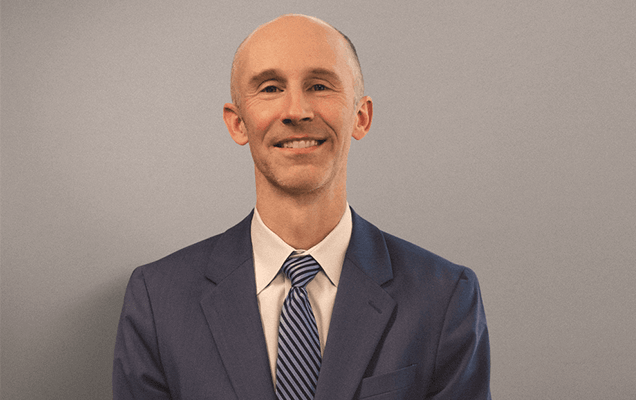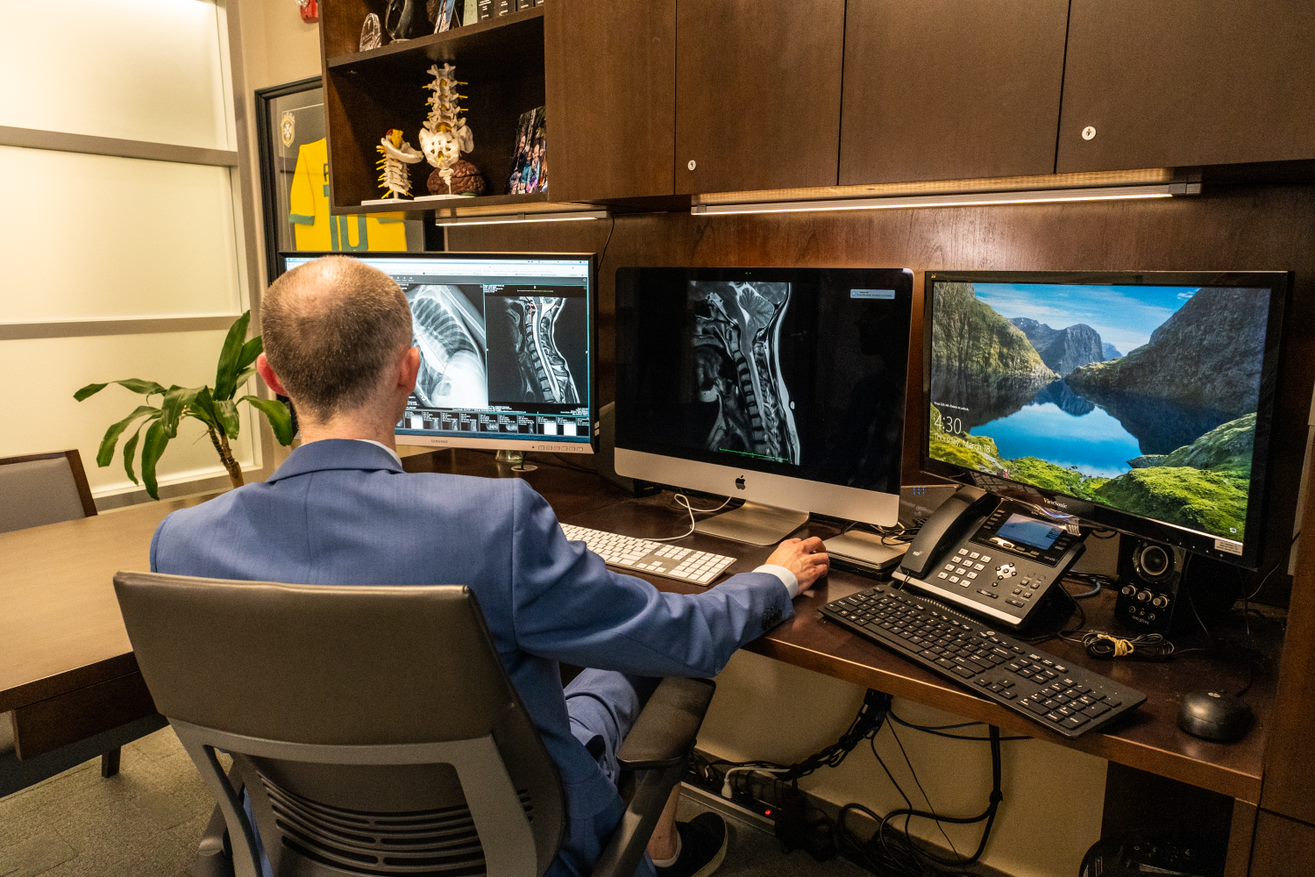Chiari Malformation Surgery: A Neurosurgical Overview
Understanding Chiari Malformation
Before considering surgical treatment options, it is important to understand Chiari malformation and its impact on the body. The condition occurs when the cerebellar tonsils, located at the base of the brain, protrude into the spinal canal. This causes a blockage in the normal flow of spinal fluid putting pressure on the brain and in some cases may lead to a fluid collection inside the spinal cord called a syrinx, or syringomyelia.
This built up pressure can cause various symptoms including posterior neck pain, headaches, dizziness, and even difficulty swallowing or breathing.
The Role of Surgery in Chiari Malformation
When conservative treatment options, like medication or physical therapy fail to provide relief, surgery may be recommended. Surgery is also likely to be recommended if a syrinx is present.
A common surgical procedure for Chiari malformation is posterior fossa decompression. This procedure is considered a decompression surgery, with the goal of reducing pressure on the brain and spinal cord. This pressure may be caused by direct compression from the cerebellar tonsils or a blockage or narrowing of the flow of spinal fluid (CSF).
Chiari malformation surgery, specifically posterior fossa decompression, offers hope for individuals suffering from this condition.
By removing a small section of bone, this protects the brain and spinal cord, and restoring the normal flow of cerebrospinal fluid, this type of surgery aims to alleviate symptoms, including neck pain, and improve the quality of life for those affected by Chiari malformation.
How is Posterior Fossa Decompression done?
Posterior fossa decompression is performed under general anesthesia and typically involves the following:
Prior to surgery, a thorough medical history is taken, and diagnostic tests such as an MRI scan of the brain and spine are conducted. These help the surgeon assess the severity of the Chiari malformation and plan the surgery accordingly.
During the procedure, a small incision is made at the back of the head. The surgeon removes a small section of bone from the back of the skull enlarging the posterior fossa. This creates more space within the posterior fossa for the cerebellar tonsils and relieves the compression on the brain and spinal cord.
By restoring the normal flow of CSF, the surgeon hopes to reduce the patient’s symptoms associated with the blockage or narrowing. This could include headaches, posterior neck pain, vomiting, swallowing problems, weakness, or numbness in the extremities.
In some cases, the covering of the brain (dura) may be opened and expanded using a patch or graft. This technique, known as duraplasty, helps to provide additional space and prevent the recurrence of symptoms by facilitating the proper flow of CSF.
Once the necessary adjustments are made, the incision is closed using sutures or staples. Patients are closely monitored in the recovery area and may spend a few days in the hospital for observation and pain management.
Recovery time varies depending on the individual, but most people can resume normal activities within a few weeks to a couple of months.
Benefits and Risks of Chiari Malformation Surgery
Every patient’s situation is unique, and the risks and benefits of surgery may vary. It is important to discuss the risks and benefits with your surgeon based on your individual case.
Benefits of Surgery
For many people Chiari malformation surgery offers the potential for significant improvement in their quality of life. Although every patient experiences different results, most patients experience at least some reduction in symptoms.
This includes relief from:
- Headaches
- Nausea and dizziness
- Posterior neck pain
- Insomnia
- Memory problems
- Difficulty with swallowing or speaking
- Numbness of face or hands
- Problems with sight or vision
Your surgeon will give you a better idea of what exactly you can expect based on your individual condition. Be sure to discuss expected outcomes with your surgeon prior to your procedure.
Risks of Surgery
As with any surgical procedure, there are risks associated with Chiari malformation treatment. Some of these risks include:
- Bleeding
- Infection
- Blood clots
- Stroke
- Nerve damage
- Abnormal reactions to anesthesia
- CSF leakage
- Neurological Defects
Cerebrospinal Fluid (CSF) Leakage
CSF leakage is a potential complication of Chiari malformation surgery. It can occur if there is a tear or a leak in the dura, the covering of the brain.
Surgeons take precautions to minimize the risk of CSF leakage, and if it does occur, it is typically managed with conservative measures or further surgical intervention.
Neurological Deficits
In rare cases, Chiari malformation surgery may result in neurological deficits. These can include weakness, sensory changes, or balance problems. The risk of neurological deficits is generally low, but it is essential to discuss this possibility with your surgeon.
We are more than surgeons,
we are your support system.
Anesthesia-related Risks
Undergoing general anesthesia carries inherent risks.
These risks are carefully assessed and managed by the anesthesia team, who will evaluate your medical history and overall health to ensure the safest possible administration of anesthesia during surgery.
Consultation with a Neurosurgeon
When considering Chiari malformation surgery, it is crucial to consult with a qualified neurosurgeon who specializes in this area.
The surgeon will evaluate your medical history, conduct a thorough examination, and review diagnostic tests to determine if surgery is the right course of action for you.
Recovery from Chiari Malformation Surgery
Immediately after surgery
Chiari malformation surgery typically takes two to three hours. Right after surgery, patients spend the first few hours in a recovery room or intensive care unit.
They will be monitored frequently for signs of complications or neurological problems that rarely arise from the surgery. You can expect to receive medications for pain, inflammation and swelling. Some of these medications can cause side effects, and your healthcare team will monitor you for any problems with these.
A hospital stay after Chiari malformation surgery can last from a few days to a week, depending on individual circumstances. Patients with special concerns such as ongoing health conditions or advanced age may have a longer stay to make sure no complications occur.
Patients who have had decompression surgery for Chiari should follow up with their doctor a few weeks after surgery. They should undergo a follow-up MRI at some point after the surgery to confirm that the pressure has been alleviated.
Additional imaging will depend on the patient’s symptoms and the results of the previous MRI. Patients do not usually need additional procedures, but they should be monitored by their doctor for any signs of complications or a return of symptoms.
In the Days After Surgery
After returning home from the hospital, your activities will be limited for a few weeks. You will gradually be able to increase to normal activity levels as you continue to heal. Your doctor may recommend the following limitations:
- No bending over
- No lifting or straining
- No long episodes of coughing
- No housework or yard work
- No alcoholic beverages
- No driving until your surgeon approves
Pain and discomfort are a normal part of recovery, especially when turning or lifting your head. Your doctor will prescribe medications to help manage pain and any muscle spasms you may experience.
After Chiari malformation surgery, fatigue and weakness, and headaches are common. It is important during this time to watch for signs of infection, such as redness, inflammation, fever or fluid accumulating or leaking around the incision.
Call your doctor if you have worsening headaches, severe neck pain when you bend your head forward, increased drowsiness, or weakness in the arms or legs.
Chiari malformation surgery can provide significant benefits by alleviating symptoms and improving quality of life for individuals affected by this condition. However, as with any surgical procedure, there are associated risks and complications to consider.
By consulting with a skilled neurosurgeon and having a thorough understanding of the potential risks and benefits, you can make an informed decision about whether Chiari malformation surgery is the right choice for you.
If you suspect you may have Chiari malformation, it is crucial to consult with a qualified neurosurgeon who can evaluate your condition and determine the most appropriate treatment options.

About Dr. Richard C.E. Anderson
Dr. Richard Anderson is recognized as one of the top, award-winning pediatric neurosurgeons in the Tri-State region. He practices out of Neurosurgeons of New Jersey's Central and North Jersey locations including the Ridgewood, Livingston and Paterson offices. Utilizing the most innovative, proven technology, Dr. Anderson specializes in the treatment of pediatric brain and spinal disorders by means of minimally invasive surgeries and complex surgeries when appropriate. With over 250 publications, invited lectures, TV, and magazine interviews, Dr. Anderson is consistently named one of America’s Top Doctors, America’s Top Surgeons, Favorite Kid’s Doctors in NJ, and recipient of Patient’s Choice Award. He is currently accepting new patients.
Recent Posts:






